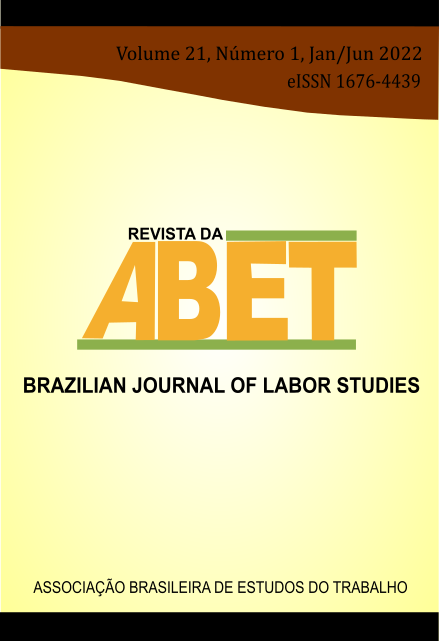AGGLOMERATION AND WAGE DIFFERENTIALS IN BRAZIL
DOI:
https://doi.org/10.61999/abet.1676-4439.2022v21n1.54931Abstract
The main objective of this study is to identify the contribution of agglomeration economies, captured by the employment density, on the wage differential in the Brazilian regions from 2010 to 2014. The regressions are based on the model proposed by Combes, Duranton, and Gobillon (2008), from the mincerian wage equations by using data from the Ministry of Labor (RAIS-MTE). The results found in all the regression models indicate that the most qualified workers, the employees in more industrialized sectors, and in the largest firms, as well as the residents of the Midwest and Southeast regions, they receive the highest salaries when compared to their counterparts. Finally, for the variable of interest - employment density - the results show that agglomeration economies positively influence the wage differentials of workers in Brazilian regions.
Downloads
Metrics
No metrics found.
Downloads
Published
How to Cite
Issue
Section
License
Copyright (c) 2022 Revista da ABET

This work is licensed under a Creative Commons Attribution-NonCommercial-NoDerivatives 4.0 International License.
Política de Acesso Livre
Esta revista oferece acesso livre imediato ao seu conteúdo, seguindo o princípio de que disponibilizar gratuitamente o conhecimento científico ao público proporciona maior democratização mundial do conhecimento.
Atribuição dos artigos é não comercial (sem derivações 4.0, isto é, Creative Commons) e o acesso é livre e gratuito para download e leitura.
Não há taxa para submissão, avaliação e publicação de artigos.
Copyright
1) Os artigos são de responsabilidade exclusiva dos autores. É permitida sua reprodução, total ou parcial desde que seja citada a fonte.
2) Os trabalhos enviados para publicação devem ser inéditos, não sendo permitida sua apresentação simultânea em outro periódico nacional.
3) Os artigos são submetidos a pareceristas "ad hoc", após prévia avaliação da Comissão Editorial, os quais podem aceitar, recusar ou reapresentar o original ao autor com sugestões para alterações. Os nomes dos pareceristas permanecem em sigilo, bem como os nomes dos autores.
Os Autores que publicam nesta revista concordam com os seguintes termos:
Autores mantêm os direitos autorais e concedem à revista o direito de primeira publicação, com o trabalho simultaneamente licenciado sob a Creative Commons Attribution License, permitindo o compartilhamento do trabalho com reconhecimento da autoria do trabalho e publicação inicial nesta revista.
Autores têm autorização para assumir contratos adicionais separadamente, para distribuição não-exclusiva da versão do trabalho publicada nesta revista (ex.: publicar em repositório institucional ou como capítulo de livro), com reconhecimento de autoria e publicação inicial nesta revista.
Autores têm permissão e são estimulados a publicar e distribuir seu trabalho online (ex.: em repositórios institucionais ou na sua página pessoal), já que isso pode gerar alterações produtivas, bem como aumentar o impacto e a citação do trabalho publicado.
Patrocinador
A publicação recebe financiamento da Associação Brasileira de Estudos do Trabalho.










